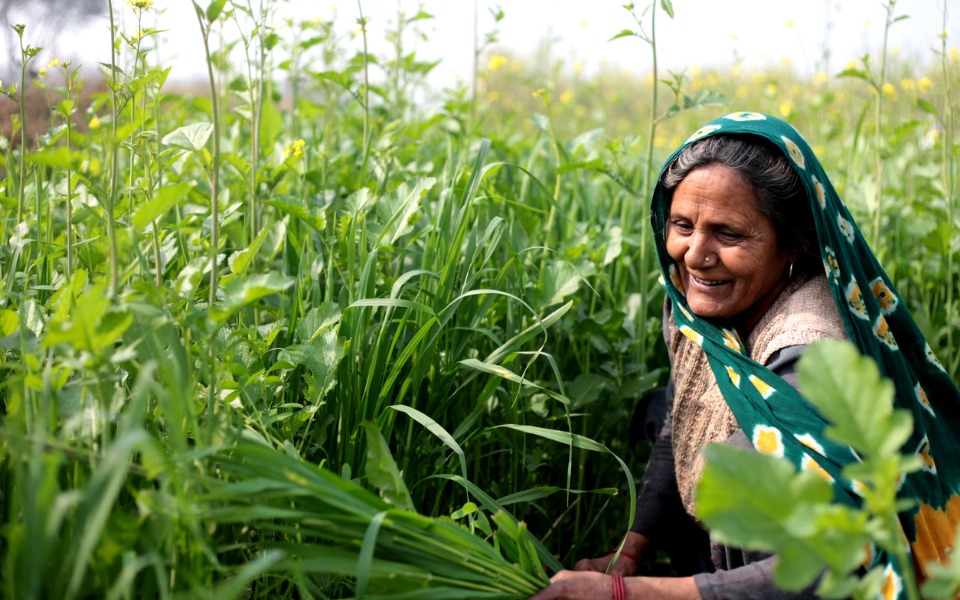
Amid COVID job loss, MNREGA shows why PM shouldn't ridicule it
More rural households have sought work under the rural jobs guarantee program Mahatma Gandhi National Rural Employment Guarantee Scheme (MNREGA) this financial year (2020-21) than any time in the last five years. In addition, nearly 1.7 crore more people have got manual unskilled work under this scheme till date when compared to 2019-20.

More rural households have sought work under the Mahatma Gandhi National Rural Employment Guarantee Scheme (MNREGA) this financial year (2020-21) than any time in the last five years. In addition, nearly 1.7 crore more people have got manual unskilled work under this scheme till date when compared to 2019-20. The statistics obtained from a live MNREGA tracker maintained by the Ministry of Rural Development, shows how the UPA-era scheme for job generation has come to the aid of rural households ravaged by loss of livelihoods due to the COVID pandemic.
The growing demand for works under MNREGA amid rising rural unemployment proves why the mockery of the scheme by the Modi government was in a poor taste. In 2015, the prime minister had termed MNREGA as a “living monument of failures” of the UPA regime.
Five years and a global pandemic later, the PM has not only had to eat his words but was also compelled to increase the allocation under the MNREGA scheme for “digging holes” as jobs vanished and rural unemployment hit record highs. A part of the Rs 20 lakh crore stimulus package unveiled earlier this year contained an additional Rs 40,000 crore towards MNREGA, taking the total budgeted amount for the scheme to a little beyond Rs 1 lakh crore for 2020-21.
This increased allocation came after a harsh, sudden and nation-wide lockdown put a stop to all economic activity for weeks, forcing hundreds of thousands of jobless migrant labourers to leave cities for their home states. The increase was expected to generate more employment opportunities for returning migrants. And it did, to some extent. But a tracker from the Peoples’ Action for Employment Guarantee (PAEG) now shows that till November 30 this year, nearly 10 million rural households which applied for work did not get any work.
And another nearly two million have already finished the mandated 100 days of work under this scheme. These households want more work but have not been given any. Now, as the last quarter of the fiscal year is almost upon us, just about a fifth of the funds allocated for MNREGA remain, with millions of households without work and many unpaid for work already done.
Also read: Farmers will get access to new markets under new laws, say PM Modi
The mandate of MNREGA is to provide at least 100 days of guaranteed wage employment in a financial year to every rural household whose adult members volunteer to do unskilled manual work. The PAEG data show that just 19.8% of the allocated MNREGA fund remains to generate employment for the remaining four months of the fiscal year; pending wage payments for work already done are nearly Rs 1500 crore; in addition to the nearly two million households which have completed 100 days of work, another nearly six million have completed 80 days of work but want more work and the all-India unmet demand for work stood at 13% at the end of November.
Also read: Falling number of cases shows country gaining hold over COVID
M A Raunaq of PAEG pointed out that the Act has a clause which allows additional 50 days of work in a fiscal year in the event of a natural calamity and that this clause has been used in the past for floods and droughts in some states. But this year, when there is perhaps the greatest ever need to invoke this clause, no such move has been made by the government.
Nearly every fourth household in Uttar Pradesh and Jharkhand, which demanded work under MNREGA this fiscal, has not got any. This sums up to well over three million households in just these two states. Incidentally, UP and Jharkhand were among those states which saw a large share of migrant workers returning from cities after the lockdown. Data from the Centre for Monitoring the Indian Economy (CMIE) show that rural unemployment has been inching up through November, breaching the 9% mark in the second week of December.
Not only have households wanting work not been able to work, demand by some households for work isn’t registered. Raunaq said, “On ground, a lot of households were not even able to demand work from gram panchayats. Their demand for work was not even registered…This violates the guarantee under the Act. In many places, people have been unable to demand work because of a nexus between the panch, contractor and officials. The contractor gets his own, cheap labour and households wanting work are denied a chance to make a living.”
The ministry of rural development’s live tracker shows that till date, average days of employment provided per household has been the lowest this fiscal in the last five years at 41.83, which is not even half the number of days guaranteed under the Act. This tracker also shows that over 66 million households have been provided work till December 14, up from nearly 55 million last fiscal; 96 million individuals have already worked under the scheme compared to a little less than 79 million last fiscal.
Yet another issue plaguing MNREGA has been the gap between wages paid under the scheme and the minimum agricultural wages in each state. The government has announced, as part of the stimulus package, that wages under MNREGA have been increased by Rs 20 to Rs 202. But this increase would have happened anyway, since the practice of adjusting annual increase to inflation is being followed. And even after the wage has been fixed at Rs 202, it is still below the minimum wage provided by many states to their agricultural workers.

